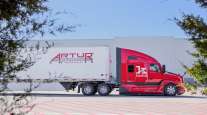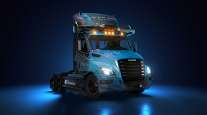Managing Editor, Features and Multimedia
How Self-Driving Trucks Could Create New Jobs
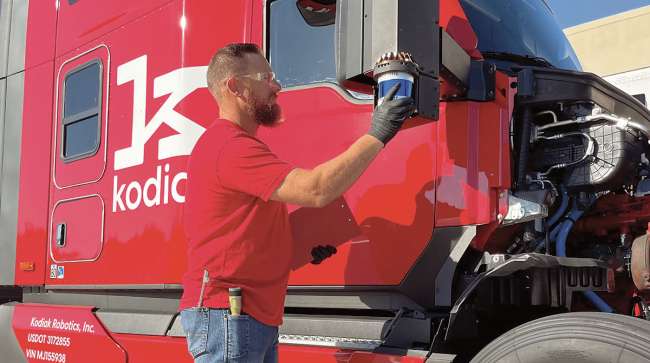
[Stay on top of transportation news: Get TTNews in your inbox.]
As autonomous truck developers move closer to deploying fully driverless on-highway tractors, they are also pioneering a set of new, specialized job functions that will be necessary to support autonomous fleets in real-world freight operations.
Even with no one onboard, unmanned trucks will still depend on trained professionals to prepare, inspect, dispatch, monitor and maintain the vehicles as they haul loads between designated freight hubs on specific stretches of highway.
Some of these emerging job opportunities will focus on safety and logistics tasks on site at the transfer hubs or terminals where autonomous trucks will drop and hook trailers in a hub-to-hub distribution model.
Other autonomous trucking jobs will be performed remotely, including fleet management, interacting with customers and monitoring the performance of the autonomous driving system.

Lepard
“What we always like to say is that driverless does not mean human-less. There will always be a human in the loop,” said Don Lepard, director of operations at self-driving truck developer Kodiak Robotics.
Rather than creating entirely new job categories, developers generally view most of these roles as new functions or specializations that build upon existing professions in the transportation industry.
To successfully integrate autonomous trucks into freight networks in a profitable way, technology developers will have to limit the amount of additional training and expertise required to fulfill these job functions.
“You can’t need a Ph.D. to run an autonomous truck,” said Andrew Culhane, chief commercial officer at Torc Robotics.

Culhane
The job of an autonomous truck dispatcher, for example, would not be a far cry from the work performed today by more traditional back-office staff, he said, especially at the large companies that already have built sophisticated, high-tech logistics operations.
“There’s probably a little bit of a misconception in people’s minds of how big that upskill gap really is going to be,” Culhane said.
The technicians who will maintain and repair autonomous trucks also will need some level of specialized training on top of their existing skills and expertise, much of which should translate to working on driverless vehicles.
Product development roles such as safety drivers, engineers and other specialists represent another long-term job opportunity in the autonomous trucking space. Even after companies commercially launch their virtual driver technology, they will continue to rely on those testing and development experts to safely expand their autonomous trucks to new freight lanes and geographies and add new capabilities.
At the same time, hub-to-hub autonomous trucking operations will create demand for shorthaul truck drivers to haul freight between the autonomous truck hubs and nearby city centers.
“We see the deployment of the technology really going hand in hand, side by side with the human driving workforce,” said Mufaddal Ezzy, senior director of government relations at self-driving truck developer Aurora.
For now, autonomous truck developers are acting as motor carriers themselves as they test and validate their technology while simultaneously hauling freight for industry partners.
At commercial launch, these technology developers likely will continue to handle many of the job functions that support autonomous fleets. Over time, however, at least some of those roles may shift to their trucking and logistics customers.
“The jobs are going to remain, whether they are with us or someone else,” Ezzy said.
While the terminology and job descriptions vary to some degree from one developer to the next, the following outline provides an overview of the types of job functions and specializations that will be needed to support a hub-to-hub autonomous fleet operation.
Autonomous Hub Operators
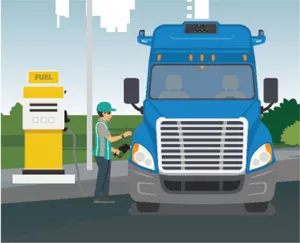
On-site staff at autonomous truck hubs will be responsible for preparing driverless trucks for their next mission and managing truck and trailer movements at the facility.
These workers, typically called hub operators or terminal operators, will perform physical tasks such as conducting pre- and post-trip vehicle safety inspections, hooking the tractor to the trailer and driving the vehicle into position for departure.
Other job duties include refueling the driverless truck and topping off the diesel exhaust fluid.
“It’s not Optimus Prime. It can’t fuel itself,” Kodiak’s Lepard said.
A big part of the hub operator’s role is covering tasks that are typically handled by truck drivers today.
“Most people in and around the freight industry understand that the driver doesn’t just drive,” Lepard said. “The whole logistics chain is built around the things that the driver does.”
Beyond that, hub operators also will be responsible for additional safety procedures. Inspections of autonomous trucks and the trailers they pull will include not only the standard checklist items from a normal driver vehicle inspection report, but also enhanced inspection criteria put in place to ensure that the unmanned tractor-trailer combination is ready for the highway.
Throughout the day, hub operators will be in constant communication with the fleet’s operations center to coordinate inspections and plan truck and trailer moves.
The hub activities will tie into the fleet’s transportation management and yard management systems to support seamless communication.
“In a general sense, it’s a higher level of detail being integrated into the logistics chain,” Lepard said.
Kodiak has found that workers with experience as commercial truck drivers generally bring a lot of value to hub operator roles given their familiarity with vehicle inspections and industry knowledge, he added.
Dispatch and Mission Control
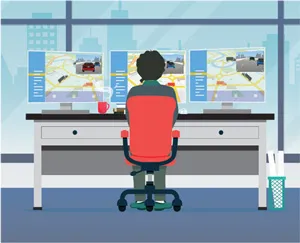
In addition to the physical hubs, autonomous truck fleets also will depend on back-office workers who plan driverless truck shipments, interact with customers and remotely monitor the self-driving vehicles as they proceed on their routes.
Autonomous truck developers delineate and combine those job tasks in slightly different ways under designations such as “mission manager,” “operations specialist” or “command center specialist,” but the core functions are similar.
Autonomous fleet dispatchers ensure the availability of driverless truck capacity and arrange shipments to meet customers’ needs.
Mission managers oversee the operation of the virtual driver and coordinate logistics with the hub operators. They assess whether an autonomous truck is clear for departure or arrival and monitor what is happening around the vehicle and on its route, including weather events that may affect the shipment.
Remote assistants provide additional context to the autonomous truck if it encounters an unusual or unexpected situation and guidance on how best to proceed safely. Examples of those scenarios include entering a construction zone or stopping due to a traffic jam caused by an accident on the road. Each remote assistant would be able to watch a group of vehicles. That ratio of specialists to autonomous trucks could expand over time as companies scale up operations.

White
Autonomous trucking expert and industry consultant Lee White said the dispatch and operations roles in the trucking industry will transfer easily to autonomous fleets, but “you’re going to have to level it up.”
Those workers will require a certain level of knowledge about autonomous vehicle technology and will need to have more awareness of what’s happening on the truck’s route without a driver onboard to share that context.
“It’s going to be a higher role, but I think it’s very trainable and it’s going to transition well,” White said.
Autonomous Truck Maintenance
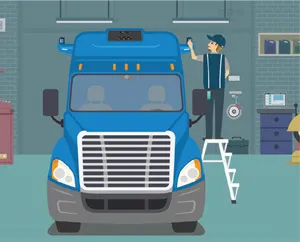
The maintenance and repair of autonomous trucks also will involve new procedures and additional training for technicians.
Compared with standard commercial vehicles, autonomous trucks are equipped with more advanced sensor arrays and onboard computing, along with redundant braking, steering and other safety systems and components to ensure the vehicle can come to a safe stop at roadside in the rare event of a critical system failure.
Many technicians who work on modern heavy-duty trucks already are familiar with advanced driver-assist systems, but driverless vehicle maintenance represents a higher degree of expertise.

Doty
“The importance of the technician jumps up a whole other level,” said Peter Doty, founding coordinator of the Autonomous Truck Technician Consortium.
ATTC, a program of SAE Industry Technologies Consortia, has brought together fleet operators, autonomous driving system developers and truck manufacturers to establish best practices for autonomous truck maintenance.
Ultimately, maintenance of autonomous trucks could involve a division of labor among the fleet, the supplier of the virtual driver and other industry players such as truck dealers.
“We certainly don’t need an Aurora- or Kodiak-branded technician to clean dead bugs off of lidars and cameras and things like that,” Doty said, “but the process of cleaning those is something that needs to be handled a certain way to make sure you have the best sensor performance.”
Although the technicians who work on these driverless vehicles will no longer be able to discuss maintenance issues with a driver, they will gain a “pretty capable partner” in the autonomous driving system’s sensors and diagnostics capabilities, Doty added.
Kodiak’s Lepard said autonomous trucks should not require dedicated specialists to perform maintenance.
“It has to be something that’s designed for a standard echnician with a little bit of additional training,” he said.
Kodiak has developed a modular sensor pod design to help address concerns about maintenance- related downtime for autonomous trucks. With this design, a technician can simply remove a sensor pod and install a replacement in about the time it takes to change a tire, Lepard said. Then the truck can keep moving freight while the faulty sensor pod is shipped out for repair.
Autonomous trucking operations also will depend on roadside assistance to support driverless trucks that experience a critical fault and pull to the side of the road. These roles would be akin to the roadside assistance providers that serve the industry today, but with additional training on how to interact with an unmanned vehicle.
Testing and Development Roles
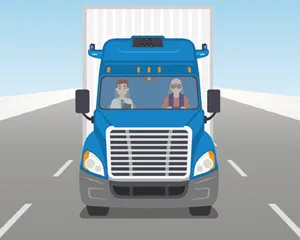
The emerging field of autonomous trucking also has created some unique career opportunities for experienced truck drivers.
Developers have hired commercial driver license holders to sit behind the wheel of their self-driving vehicles and monitor the autonomous driving system’s performance while testing on public roads.
In addition to ensuring safety, these test drivers also draw from their own driving experience and industry expertise to help guide the development of the virtual driver technology and how it responds to various scenarios it may encounter on the road.
Even after autonomous truck developers commercially launch the first iterations of their technology, they will continue to rely on test drivers as they expand to new lanes and geographies and continuously improve the capabilities of their autonomous driving systems.
These frontline deployment jobs include not only safety drivers or vehicle operations specialists behind the wheel, but also engineers, data gatherers and mapping experts in the passenger seat.
“Those are long-term positions,” White said.
Broader Workforce Implications
Beyond the new jobs that will directly support autonomous fleet operations, this emerging technology promises to generate new shorthaul freight opportunities for truck drivers, who will continue to handle the more complex first- and final-mile driving in and around urban centers in manually driven trucks.
White compared autonomous trucking to the rise of truck-rail intermodal operations several decades ago. At that time, truckers were concerned that trains would take their jobs. Instead, intermodal providers were able to optimize freight networks and offer driving jobs that provided regular home time and more consistent schedules.
“Today, an intermodal job at these trucking companies is one of the most desired jobs,” White said. “I think we’re going to see a very similar model as autonomous trucking begins to scale.”
Transtex CEO Mathieu Boivin discusses the environmental sustainability of auxiliary power units. Tune in above or by going to RoadSigns.ttnews.com.
Kodiak’s Lepard agreed that hub-to-hub autonomous trucks will benefit professional truck drivers by boosting demand for local driving jobs that typically experience lower turnover rates than longhaul jobs.
“I really view autonomy as supporting the driver network,” he said.
Meanwhile, greater efficiency in the logistics industry could generate growth in many other sectors of the economy as well, including retail and grocery.
“We think the development and deployment of technologies like the Aurora Driver are going to drive significant, high-quality job growth across the ecosystem,” Aurora’s Ezzy said.
Ultimately, autonomous trucks would provide benefits for some types of freight movement but will not be a good fit for others.
Several autonomous truck developers are targeting high-density freight lanes in Texas as early deployment opportunities. Aurora, for one, aims to begin operating a small number of fully driverless trucks between Dallas and Houston by the end of this year.
Want more news? Listen to today's daily briefing above or go here for more info
White pointed to time-sensitive shipments, such as produce from California, as another promising business case. Those goods would be able to reach markets across the country more quickly on driverless trucks because they aren’t constrained by driver hours-of-service limits.
“Not everybody is going to use autonomous vehicles, but the ones that do have the network and do the right planning and do the right optimization are going to see the opportunity,” White said. “It is going to be very cost-effective for the right business model, for the right lanes, for the right customers. It’ll help them grow revenue at a tremendous pace and optimize their operations in a way that they can’t do right now with the limitations they have with human drivers.”



